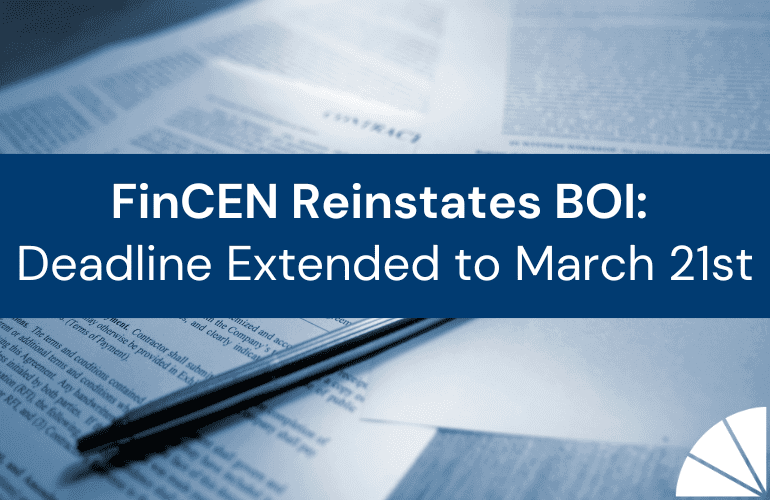
Small businesses are aptly referred to as the backbone of our economy. These businesses bring diversity to product selection, personalization to the customer service experience, and jobs, growth, and innovation to our communities. According to data from the SBA’s Office of Advocacy, the 32.5 million small businesses in the US represent 99.9% of all businesses in the US and employ 46.8% of the US workforce. In Massachusetts, 715,425 small businesses represent 99.5% of the Commonwealth’s businesses and employ 45.7% of their workforce. Many small businesses have closed their doors, whether temporarily or permanently, and others continue to struggle to stay afloat amid the pandemic. That’s why it’s essential for small businesses to leverage COVID-19 relief programs, such as the Employee Retention Credit (ERC), to optimize the tax relief available to them.
The financial relief provided by the ERC can be quite significant.
The ERC is a tax credit available for eligible employers to claim against qualified wages paid between March 13, 2020, and September 30, 2021. ERC program terms and eligibility differ depending on when the qualified wages were paid. Eligible employers may claim refundable tax credits on their 941s equal to 50% of qualified wages paid to employees between March 13, 2020, and December 31, 2020. Eligible employers may claim refundable tax credits on their 941s equal to 70% of qualified wages paid to employees in 2021.
For 2020, employers may claim qualified wages paid up to $10,000 per employee, meaning they could receive a maximum credit of $5,000 per employee for the year. For 2021, employers may claim qualified wages up to $10,000 per employee per calendar quarter, meaning they could receive up to $7,000 per employee per quarter. If you have 20 employees, that’s $140,000 per quarter. If you qualify for ERCs in all three quarters in 2021, that’s $420,000 for the year.
Meeting ERC eligibility requirements may be easier than you think.
When the ERC was first introduced, small businesses were defined as those employing 100 or fewer average full-time employees in 2019. For ERC purposes, a full-time employee must have worked an average of at least 30 hours per week or 130 hours in any calendar month in 2019. Anyone who works less than that does not count at all towards the 100 employee count. Recipients of other federal COVID-19 relief, such as Paycheck Protection Program (PPP) loans, were not also eligible for the ERC. However, that’s no longer the case.
For ERCs claimed against qualified wages paid in 2021, the definition of a small business was updated to include those employing 500 or fewer average full-time employees in 2019. And, while employers cannot use the same wages for both ERC and PPP forgiveness, the IRS now allows businesses to exclude PPP forgiveness income and grant income from Shuttered Venue Operator Grants (SVOG) and the Restaurant Revitalization Fund (RRF) from gross receipts when determining eligibility to claim the ERC for wages paid in 2020 or 2021. Qualified wages were also updated to include group health plan expenses, even if no other wages are paid.
Businesses with workforces exceeding the employee thresholds in either year are considered large employers. While large employers do not qualify for the same level of relief, wages paid to employees while they were not providing services are considered qualified wages. If your business is qualified as a severely financially distressed employer, all wages are eligible for ERC, regardless of the size of your workforce.
Eligibility isn’t based solely on gross receipts; there are two avenues that lead employers to ERC eligibility.
An employer is eligible for this credit if they experience a decline in gross receipts meeting the respective year’s threshold. The qualifying quarterly gross receipts decline in 2020 was 50%, but that was reduced to 20% for 2021. Employers in 2021 may elect to base their qualification on the previous quarter’s gross receipts test without being required to use that election across the subsequent quarters.
But it’s important to understand an employer is also eligible if their trade or business operations were fully or partially suspended due to a government mandate or order, regardless of gross receipts. Even if your offices did not close, whether temporarily or permanently, government mandates and orders often lead to supply chain disruptions, vendor relationship challenges, reductions to hours of operation, and other business model and operational changes.
Special accommodations exist to expand eligibility to severely financially distressed employers and recovery startup businesses.
Qualification as a severely financially distressed employer is based on a decline in gross receipts of less than 10% (rather than 80%) for the calendar quarter as compared to the same calendar quarter in 2019. If you started the business after 2019, you may perform the gross receipts test based on the same quarter in 2020.
If your business qualifies as a recovery startup business, you may be eligible for the ERC if you started the business after February 15, 2020 and have average annual gross receipts that do not exceed $1 million for the 3-taxable-year period ending with the taxable year that precedes the calendar quarter being tested. Unlike all other businesses, this credit is available for wages paid through December 31, 2021.
Contact LGA
The business tax and advisory teams at LGA help businesses navigate the complexities of existing and evolving tax laws and provide them with the resources they need to leverage COVID-19-related financial relief. If you have any questions please contact us today.





